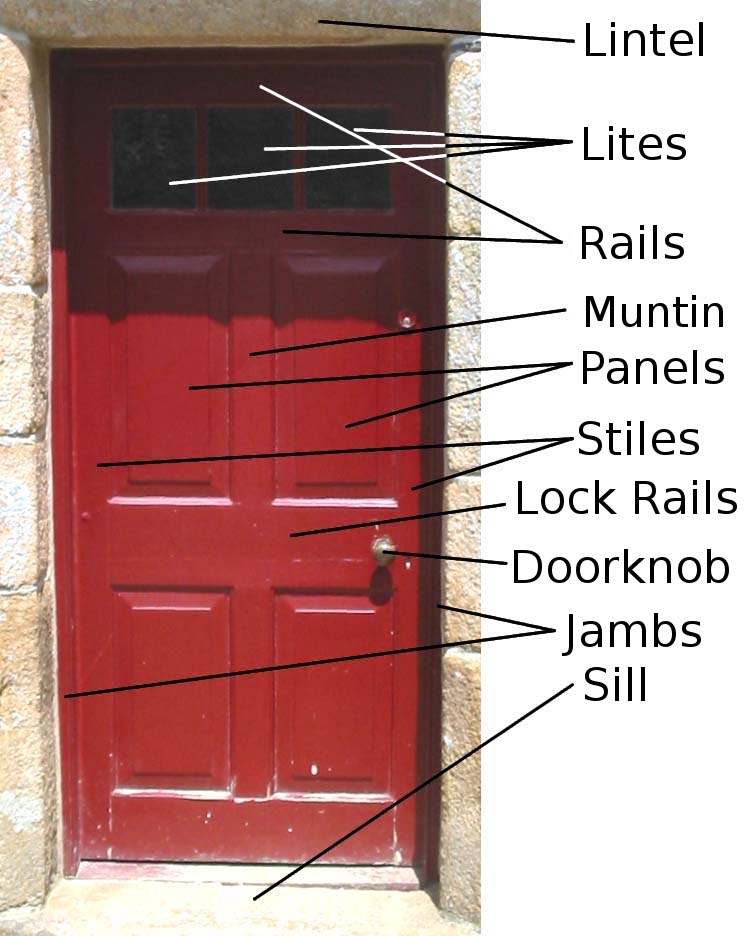Doorjamb on:
[Wikipedia]
[Google]
[Amazon]
 In
In
 In
In architecture
Architecture is the art and technique of designing and building, as distinguished from the skills associated with construction. It is both the process and the product of sketching, conceiving, planning, designing, and construction, constructi ...
, a jamb (), is the side-post or lining of a door
A door is a hinged or otherwise movable barrier that allows ingress (entry) into and egress (exit) from an enclosure. The created opening in the wall is a ''doorway'' or ''portal''. A door's essential and primary purpose is to provide securit ...
way or other aperture. The jambs of a window
A window is an opening in a wall, door, roof, or vehicle that allows the exchange of light and may also allow the passage of sound and sometimes air. Modern windows are usually glazed or covered in some other transparent or translucent ma ...
outside the frame are called . Small shafts to doors and windows with caps and bases are called ; when in the inside arris
In architecture, an arris is the sharp edge formed by the intersection of two surfaces, such as the corner of a masonry unit;
the edge of a timber in timber framing; the junction between two planes of plaster or any intersection of divergent a ...
of the jamb of a window, they are sometimes called .
A doorjamb, door jamb, or sometimes doorpost is the vertical portion of the door frame onto which a door
A door is a hinged or otherwise movable barrier that allows ingress (entry) into and egress (exit) from an enclosure. The created opening in the wall is a ''doorway'' or ''portal''. A door's essential and primary purpose is to provide securit ...
is secured. The jamb bears the weight of the door through its hinge
A hinge is a mechanical bearing that connects two solid objects, typically allowing only a limited angle of rotation between them. Two objects connected by an ideal hinge rotate relative to each other about a fixed axis of rotation, with all ...
s, and most types of door latches and deadbolt
A deadbolt or deadlock is a type of lock morticed into a wooden door where a bolt is thrown into the door frame, using a key from either side, to secure the door. It is distinct from a spring bolt lock because a deadbolt can only be opened by ...
s extend into a recess in the doorjamb when engaged, making the accuracy of the plumb (i.e. true vertical) and strength of the doorjambs vitally important to the overall operational durability and security of the door.
The word ''jamb'' is also used to describe a wing of a building, perhaps just in Scottish architecture. John Adam added a 'jamb' to the old Leith Customs house in the Citadel of Leith in 1754–1755.
In arch
An arch is a curved vertical structure spanning an open space underneath it. Arches may support the load above them, or they may perform a purely decorative role. As a decorative element, the arch dates back to the 4th millennium BC, but stru ...
es and vaults, the soffit
A soffit is an exterior architectural feature, generally the horizontal, aloft underside of the roof edge. Its archetypal form, sometimes incorporating or implying the projection of rafters or trusses over the exterior of supporting walls, is t ...
is the curved inner surface of the arch or vault located above the impost, as opposed to the outer surface called the arch or vault crest.
See also
* Jamb statue *Post and lintel
Post and lintel (also called prop and lintel, a trabeated system, or a trilithic system) is a building system where strong horizontal elements are held up by strong vertical elements with large spaces between them. This is usually used to hold ...
References
Doors Locksmithing Architectural elements {{Architecturalelement-stub